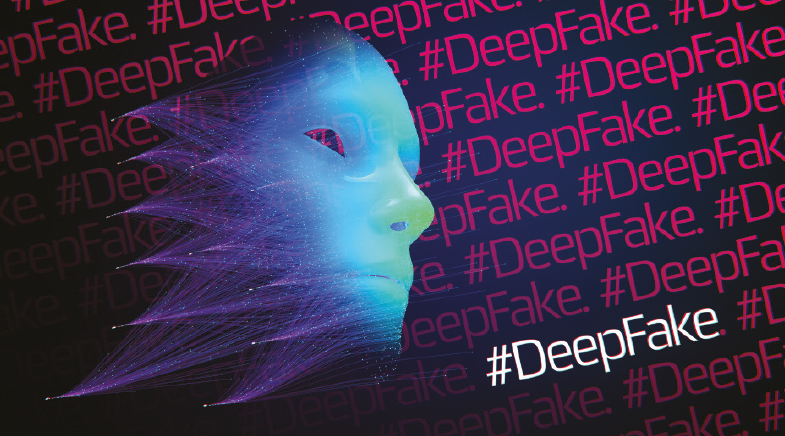Designing buildings of tomorrow
-
- from Shaastra :: vol 02 issue 06 :: Nov - Dec 2023

Construction solutions that rely on digital tools and satellite data pave the way for a nature-friendly world, says digital technologist Will Cavendish.
Will Cavendish is the Global Digital Services Leader at Arup, a global sustainable development consultancy working on design, engineering and architecture. At Arup, named after its founder Ove Arup, U.K.-based Cavendish helps connect the dots between technology and design. He tells Shaastra that technology will significantly help the construction sector reduce its carbon footprint, become more resource-efficient and bring in innovation. Excerpts from an interview:
Could you share some examples of how you are using digital technologies in your work?
An example I often talk about is a piece of work we did in Shanghai city, which has real problems with floods: it shuts down businesses and causes disruption to homes. The traditional solution would have been to understand where the water accumulates when cyclones happen and build gigantic underground pipes to take it away. This approach is expensive and uses a load of carbon because it is cement-dominated.
"Often buildings that haven't used sensors are heating and cooling the same space at the same time. What a waste of energy!"
We pitched in with a different solution, which relies on digital tools and uses the power of data. We pulled together satellite data, and used machine learning to understand and interpret the geography of Shanghai at a very granular level in each of the districts. Our people (at Arup) who work with water infrastructure used this data to come up with nature-based solutions. Our solution ended up being 30% cheaper and used 30% less carbon. It was better for the environment and for families, because it employed small-scale plantings, permeable solutions, runoffs in little catchment areas, as well as some engineering solutions to meet the city's challenge in a very different way. We've used that same approach of using the power of satellite data and artificial intelligence to allow city designers and infrastructure planners to design different solutions in multiple cities around the world.
Likewise, we design buildings with very different materials. About 20% of the world's carbon is emitted by concrete and steel, and we're not going to meet our climate change ambitions unless we design differently. So, we've used advanced evolutionary algorithms and digital analysis of structural engineering challenges to design multistorey buildings that prioritise the use of regenerative materials, such as timber, to significantly reduce embodied carbon. That can only be done using the power of digital technologies and digital insight.
How does the use of the Internet of Things (IoT) and sensors help?
IoT and sensors help in understanding how buildings operate and how we can improve the efficiency and effectiveness of a building. We are now beginning to get real-time data from buildings with sensors, and it's helping us understand how we can improve building performance.
For instance, often buildings that haven't used sensors are heating and cooling the same space at the same time. What a waste of energy! That's because we haven't had the digital systems and the data to understand and improve the functioning of a building. So, when we put in even the first layer of IoT and data into a building and make the building even semi-intelligent, you see a significant 20-30% improvement. This is brilliant, not just for a building owner who sees a reduction in usage, but also an improvement in the overall carbon footprint of the building... simply from being able to bring the power of data from IoT to manage the building properly.
We're also seeing it being used much more in predictive maintenance. For example, in the water sector, flooding-related outages or failures in utilities... are eminently predictable, but you need the data, and you need the power of machine learning to understand and predict those patterns.
We're working in different parts of the world to bring the power of data and AI insight to understand assets and anticipate when they're going to break down and help people improve them. We think it'll meet people's needs, improve efficiency, as well as cut carbon and promote nature.

With the use of AI, are there any new paradigms or design ideas emerging?
There are many types of AI that we at Arup are using and want to deploy. Things like physics-based AI, a very different sort of system, or Graph Neural Networks, which are very powerful in improving design ideas. We're investing across the board in different kinds of AI that are appropriate and useful in the built environment, and working with major tech companies to do that.
In many cases, these newer design ideas are driven by the need to design buildings in response to the climate, the climate crisis, and the biodiversity challenge. For example, designing buildings that can be completely reused, and are part of a circular economy is a big challenge, but a big opportunity as well. And there are new design ideas about what that means for buildings, what they look like, what materials are used, how we assemble and disassemble them down the line... and that's changing the nature of building and design practice. Arup recently launched the Urban Heat Snapshot (bit.ly/Urban-Heat), which used AI, to better understand how heat causes problems in different cities globally. One of the very real causes of urban heat is the way in which we design buildings, using cement, glass, and steel... Those things provide an enormous impetus to extra heat in the city. So, we need to design in different ways: use more permeable surfaces and materials, use space in a different way, make green facades, use albedo. Those are the things that are changing. There are lots of great things coming into the sector in response to the need to tackle the climate crisis. We're doing our bit to live within the boundaries of the planet.
"One of the causes of urban heat is the way we design buildings... We need to use space in a different way, make green facades..."
Generative AI is making inroads into several sectors. What about the construction sector?
At the moment, generative AI in the built environment is still in the very early stages. Like many organisations, we're experimenting with using the power of GenAI in some areas. For example, before any construction happens, you have to go through quite onerous planning, and it often involves scanning loads and loads of documents or gathering together lots of information in one place and then processing it and providing it in a legal and safe way. We are doing some internal experiments on how we can use GenAI to help us with this.
Likewise, there are lots of building codes that you need to follow. These codes are often pretty complicated and massively long documents. We are developing GenAI-based search and chatbots to deploy internally, to allow all our engineers or specialists to interrogate those codes and get out the relevant, critical safety factors and the design parameters more quickly and effectively than earlier. This is still at the experimental stage. Obviously, in buildings, you have to make sure everything is safe, secure, and done properly. So far, we've had some really good outcomes. We think that in the near future, for many of our specialist areas, such as our fire engineers, our acousticians and so on, we will be able to use GenAI-based search and chatbots to improve the quality and speed of our work.
With the rise of data also comes the threat of cybersecurity. How do we plan to address this?
You're absolutely right. As data in the built environment is being captured and used, it also becomes vulnerable to cyberattacks. The fact that we've been an analogue sector has protected us from the worst of the attacks, but we need to learn from other sectors like the health sector or the insurance sector. It has happened in other sectors, and our sector is vulnerable, too. This is high on our clients' list of worry points, whether those are governments or the private sector. We are making sure that we build the highest standards of data security in our systems. We're thinking hard about where data gets stored, who has access to it, and how we make sure that high standards of cybersecurity are woven into our projects. We go through the process of cybersecurity verification and cyber essentials that need to happen. This is a fast-moving space because the threats get ever more sophisticated. It is an industry-wide challenge.
See also:
Have a
story idea?
Tell us.
Do you have a recent research paper or an idea for a science/technology-themed article that you'd like to tell us about?
GET IN TOUCH














